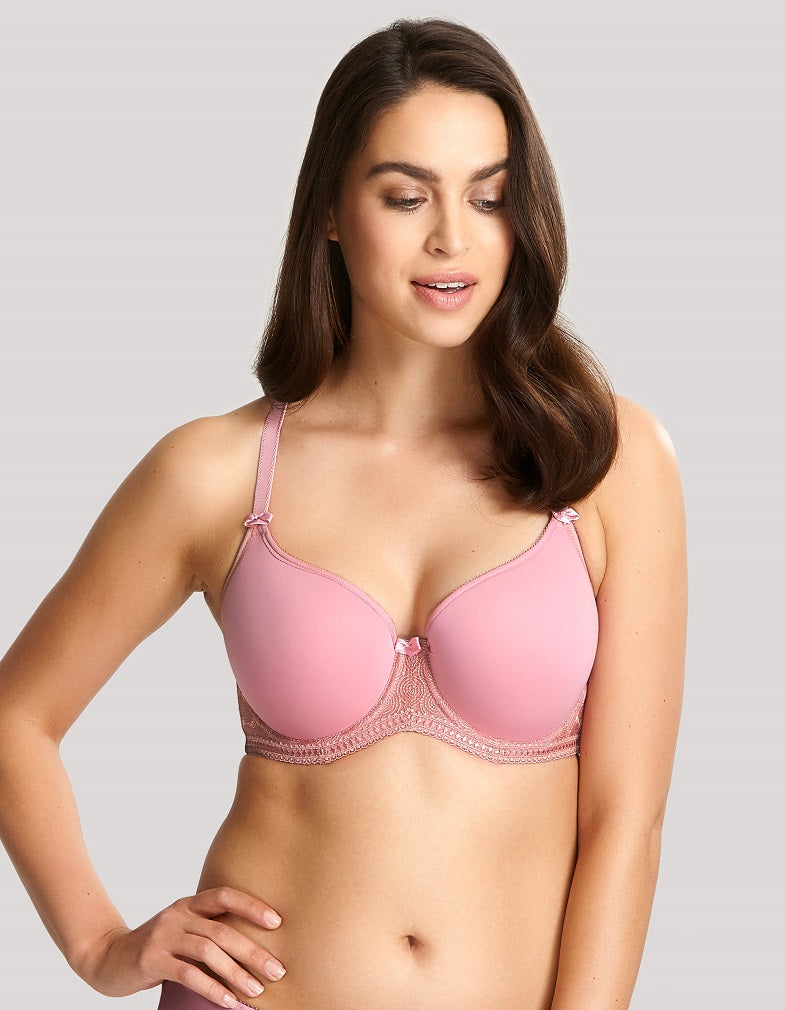Providing hourglass women with real support for their breasts is a big priority at Hourglass Lingerie. But support doesn’t always come in the form of a properly fitted bra. If you’re one of the 1 in 8 women likely to be diagnosed with breast cancer in her lifetime, you are also in need of a very different kind of support.
October is Breast Cancer Awareness Month. Breast cancer is a disease that affects young and old, rich, poor, famous or obscure, women of all races (although statistics vary as to the likelihood of each race to be diagnosed), and occasionally even men. Here are some facts about breast cancer:
- Besides skin cancer, breast cancer is the most commonly diagnosed cancer in women, with 30% of cancers diagnosed in women being breast cancer.
- Breast cancer has a higher death rate for women in the US than any other cancer.
- Your risk for breast cancer significantly increases if you have a mother, sister, or daughter who has had breast cancer. However, 85% of breast cancer cases occur in women who have no family history of breast cancer.
- Under the ages of 45, black women are most likely to be diagnosed with breast cancer and more likely to die of breast cancer than white, Asian, Latina, or Native-American women.
- The risk of breast cancer increased with age.
- Men can be diagnosed with breast cancer, although the likelihood is significantly lower. 1 in 1,000 men are diagnosed with breast cancer at some point in their lifetime.
- Breast cancer incidence and death rates have been dropping since the turn of the 21st century.
- As of April 2017, there were 3 million women living with breast cancer in the United States.
Although the statistics are scary, breast cancer is not what it once was. Before the 1980s, breast cancer was often diagnosed so late that by the time it was found, there was nothing to be done. In the 1970s, the 5-year survival rate was only 75%, but it’s now increased to 90%. Breast cancer incidence has increased since then, probably because we know what to look for now, but it’s much less likely to be a death sentence than it once was.
Why? Well...mostly because we talk about it now.
Before 1982, breast cancer was considered a taboo subject. It was difficult to find information on breast cancer because no one wanted to talk about it. So when women started to develop symptoms for breast cancer, they didn’t talk to their friends about it and didn’t really recognize that it was such a problem until the cancer was too far advanced. Lack of information about breast cancer was, in Nancy Goodman Brinker’s view, perhaps the main reason for the death of her sister. When her sister, Susan Goodman Komen, was dying of breast cancer in 1980, Nancy promised that she would do everything in her power to end breast cancer. She followed through 2 years later with the foundation of the Susan G. Komen Breast Cancer Foundation.
Through the Susan G. Komen Foundation, people started to talk about breast cancer: how to spot it, the research being done to find treatments and cures, even how to prevent it. Often by the time symptoms are bad enough to visit the doctor, the cancer is too far advanced, so Susan G. Komen put out information for a self-breast exam. To this day, they combat breast cancer through education and fundraising for research. Although Susan G. Komen didn’t found Breast Cancer Awareness Month (a brainchild of the American Cancer Society and Imperial Chemical Industries in 1985), their most famous fundraising event does take place this month: Susan G. Komen 3-Day “For the Cure,” a 60-mile walk to raise money for breast cancer research.
Between the foundation of Breast Cancer Awareness Month and the work done by Susan G. Komen, we know much more about breast cancer than we used to, and we’re much more willing to talk about it. We may not have a cure yet, but we do know that the earlier you catch it, the better your chances are. So, the next time you take a shower, take this brief self exam:
- Run your fingers around your entire breast in a circle.
- Move your hand up to the armpit area, as well.
- Do you feel any hard lumps or knots? If so, call your healthcare provider for an evaluation.
- Repeat monthly.
Stay aware. Stay healthy. And as a further way to support you (and your breasts), here are some helpful resources for breast cancer:



Leave a Comment